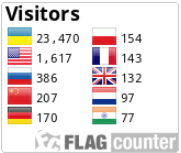AESTHETIC PERCEPTION OF COLOUR IN TRAINING OF DESIGN STUDENTS
DOI:
https://doi.org/10.28925/2617-5266.2023.89Keywords:
aesthetic perception, colour, competence, colour competence, design studentsAbstract
The article examines the aspects of colour training of design students, discusses the concept of colour competence and its importance in the process of professional training of future specialists in the field of design. The purpose of the article is to study the aesthetic perception of colour in the process of colour training of design students. Colour is highlighted as the most important element of aesthetic perception and emotional expression of design objects, has a psycho-emotional impact on the receiver (audience) and carries a certain informational value. The aesthetic perception of colour is understood as a complex process in which the awareness of aesthetic, artistic, and spiritual values takes place from the standpoint of sociocultural and historical factors. The need for colour competence through the study of a complex of professional disciplines is emphasised, which is decisive in the process of training design students. The study presents separate tasks using interactive technologies that contribute to the formation of aesthetic perception of colour in the process of colour training of students of higher education in the speciality 022.01 Design of the educational and professional programme “Graphic design” SI “Luhansk Taras Shevchenko National University”. It is noted that the development of colour competence of design students is an important prerequisite and indicator of their readiness for professional activity.
Downloads
References
Ahmed, S., & Gurumoorthy, B. (2017). Form and Colour – Two Basic Elements of Design. In: Chakrabarti, A., Chakrabarti, D. (eds). Research into Design for Communities, 2. ICoRD 2017. Smart Innovation, Systems and Technologies, 66. Springer, Singapore. https://doi.org/10.1007/978-981-10-3521-0_76
Bailey, D. E., & Barley, S. R. (2020). Beyond design and use: How scholars should study intelligent technologies. Information and Organization, 30(2), 100286. https://doi.org/10.1016/j.infoandorg.2019.100286
Bartholomew, J., & Rutherford, S. (2013). The design student’s handbook: Your essential guide to course, context and career. London: Francis and Taylor (Routledge). https://doi.org/10.4324/9781315661810
Bernardo, N., & Duarte, E. (2020). Design, education, and the online tech-pandemic. Strategic Design Research Journal, 13(3), 577–585. https://doi.org/10.4013/sdrj.2020.133.22
Bhamra, T., & Hernandez, R. (2021). Thirty years of design for sustainability: An evolution of research, policy and practice. Design Science, 7, 175–192. https://doi.org/10.1017/dsj.2021.2
Bondar, I., Gumenyuk, T., Udris-Borodavko, N., & Penchuk, O. (2019). Entrepreneurship model for creation of designer competences in the process of professional training. Journal of Entrepreneurship Education, 22(6). https://www.abacademies.org/articles/entrepreneurship-model-for-creationof-designer-competences-in-the-process-of-professional-training-8818.html
Brauer, S. (2021). Towards competence-oriented higher education: a systematic literature review of the different perspectives on successful exit profiles. Education & Training, 63(9), 1376–1390. https://doi.org/10.1108/ET-07-2020-0216
Chen, S-Y., Lin, P-H., & Chien, W-C. (2022). Children’s digital art ability training system based on ai-assisted learning: a case study of drawing color perception. Frontiers in Psychology, 13:823078. https://doi.org/10.3389/fpsyg.2022.823078
Curtis-Boles, H., & Bourg, E. (2010). Experiences of students of color in a graduate-level diversity course. Training and Education in Professional Psychology, 4(3), 204–212. https://doi.org/10.1037/a0017985
Dong, Z.L. (2017). Rethinking of design color teaching. International Conference on Culture, Education and Financial Development of Modern Society (ICCESE 2017), 103, 449-451. https://doi.org/10.2991/iccese-17.2017.114
Foxon, M., Richey, R. C., Roberts, R. C., & Spannaus, T. W. (2023). Training manager competencies: The standards. 3rd ed. ERIC Clearinghouse on Information & Technology, Syracuse University.
Goethe, J. W. (2016). Zur Farbenlehre Hardcover. Hofenberg. https://www.thalia.de/shop/home/artikeldetails/A1041248148
Ilieva, J., Milusheva, G., & Zlatev, Z.R. (2020). Relationship between colors and forms and their significance for education. 15th International Conference on Virtual Learning (ICVL-2020), 237–241. https://eprints.ugd.edu.mk/27378/1/2020_KD_VS_MV_ICVL.pdf
Itten, J. (2020). El arte del color Editorial GG. https://editorialgg.com/el-arte-del-color-itten-libro.html
Kostiuk, O. P. (2022). Estetychne spryiniattia v systemi pidhotovky maibutnikh dyzaineriv. [Aesthetic perception in the training system of future designers]. Series Pedagogical sciences: realities and prospects, 89, 77–80. https://doi.org/10.31392/NPU-nc.series5.2022.89.16
López-Meneses, E., Sirignano, F. M., Vázquez-Cano, E., & Ramírez-Hurtado, J. M. (2020). University students’ digital competence in three areas of the DigCom 2.1 model: A comparative study at three European universities. Australasian Journal of Educational Technology, 36, 69–88. https://doi.org/10.14742/ajet.5583
Mospan, N. (2022). Higher education and the labour market in Ukraine: Trends and challenges. Continuing Professional Education: Theory and Practice, 3, 7–14. https://doi.org/10.28925/1609-8595.2022.3.1
Mospan, N. (2023). Digitalisation of writing in higher education: The COVID-19 pandemic impact. Journal of University Teaching & Learning Practice, 20(2), 1–24. https://doi.org/10.53761/1.20.02.08
Rychen, D.S., & Salganik, L.H. (2001). Defining and selecting key competencies. Hogrefe & Huber Publishers. https://www.researchgate.net/publication/232511938_Defining_and_Selecting_Key_Competences
Published
How to Cite
Issue
Section
License
Copyright (c) 2023 The Modern Higher Education Review

This work is licensed under a Creative Commons Attribution-NonCommercial 4.0 International License.













